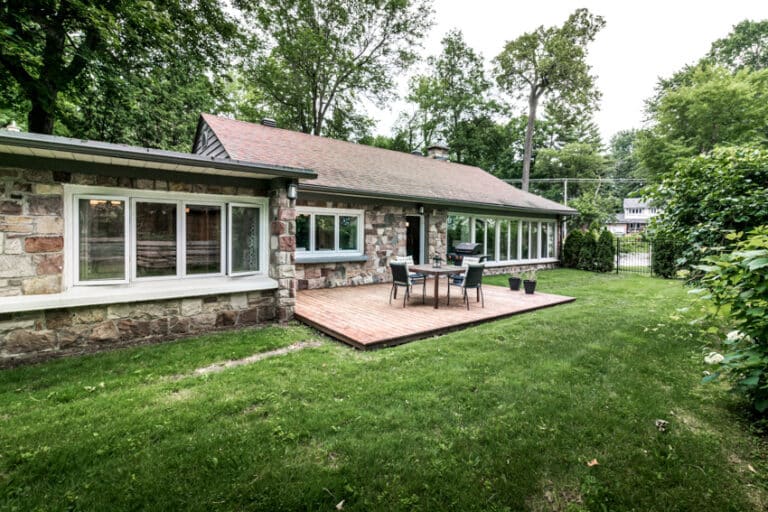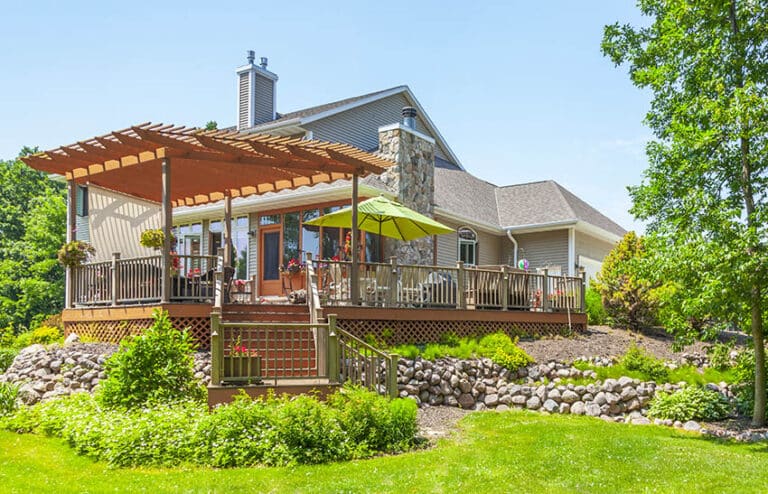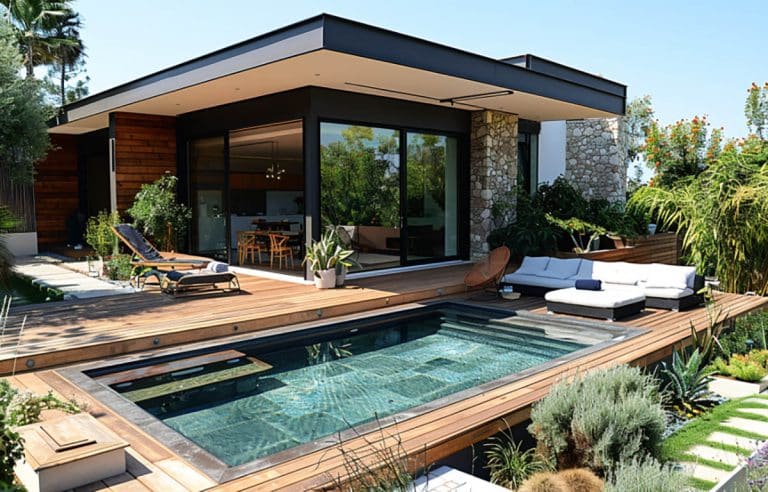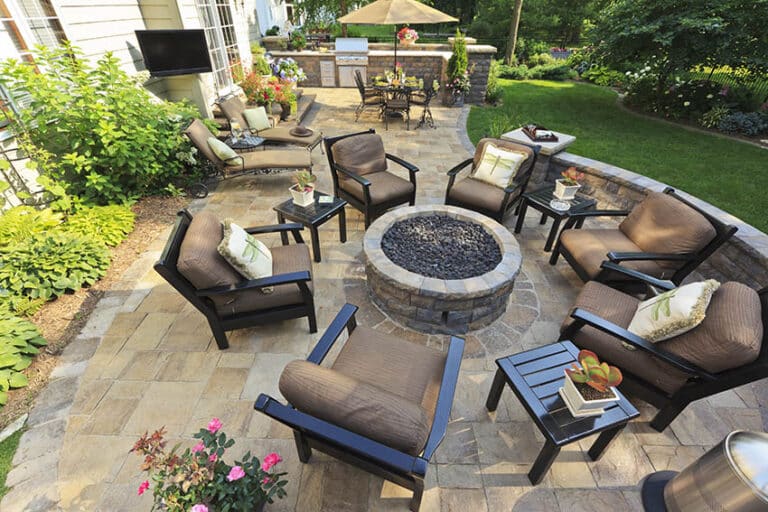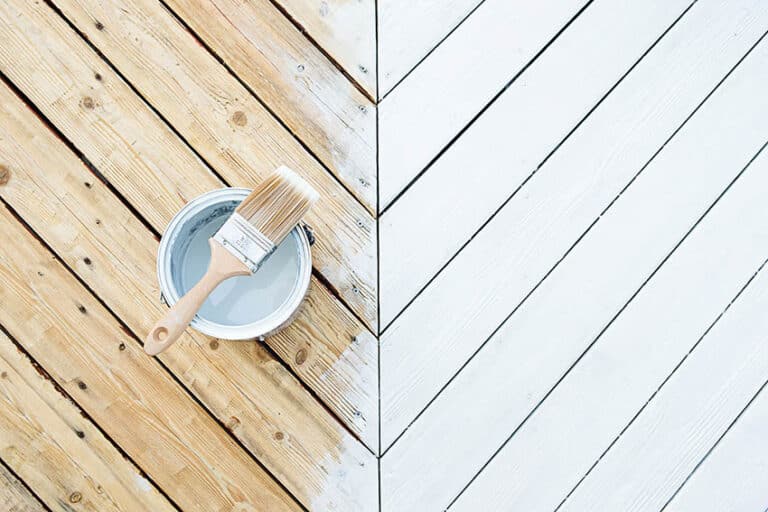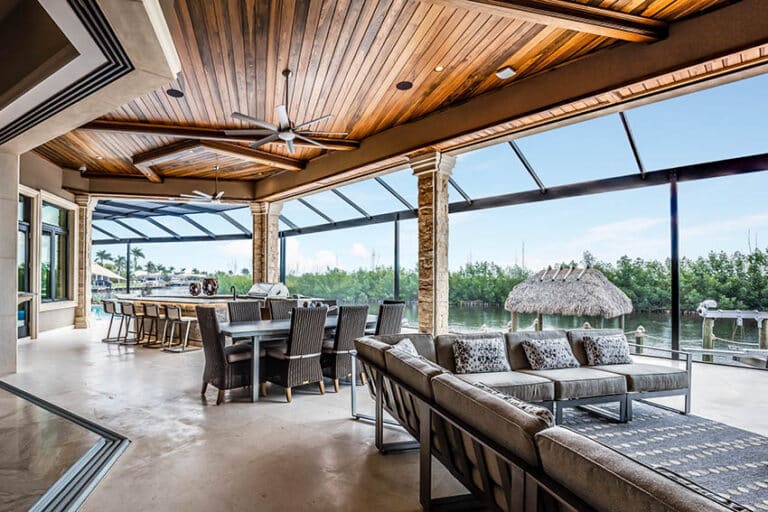Types of Patio Enclosures (Design Guide)
Once the weather turns warm and sunny, people enjoy using their patio for barbecues, parties, and visiting. Yet, depending on the climate they live in, not everyone has the chance to enjoy their patio year-round. When a homeowner decides they want to use their patio more often, they need to research the types of patio enclosures to find the best options.
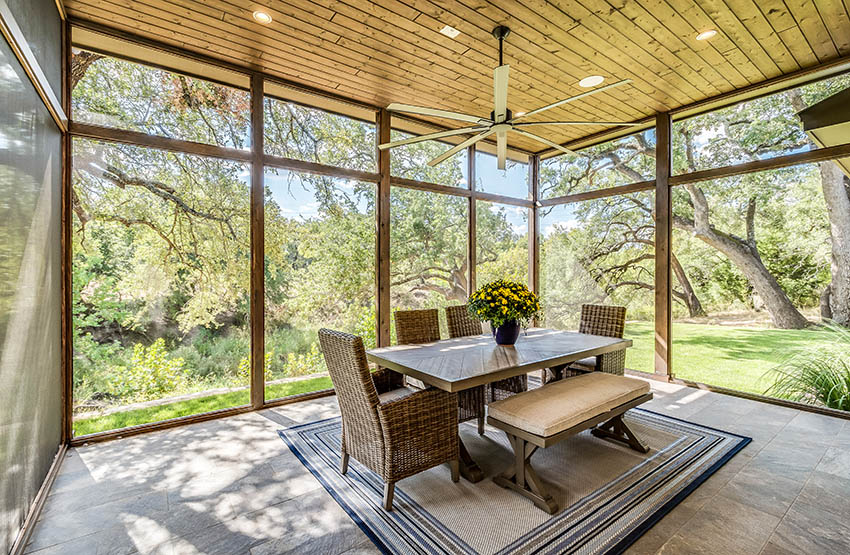
Patios are versatile, and it seems no two are alike. A patio design depends on a home’s style, size, construction, and yard size. Enclosing an existing patio includes decisions such as the type of construction materials, screened or glass windows, how many seasons the homeowner wants to use the enclosed patio, and what weather and elements the patio will be exposed to.
Enclosing a patio provides a more functional outdoor space to relax and enjoy your home and yard. This informative guide will discuss patio enclosure types, options, materials, and costs to help you make the best decision once you decide to enclose your patio.
Patio Enclosure Options

Depending on your needs, a patio enclosure could be a simple task or a full-on construction project. A simple covering such as a pop-up canopy helps shield some of the sun and light rain but does not help repel bugs such as mosquitoes.
Some homeowners hang a bamboo shade where the sun shines on the deck at the hottest time of the day. These are all easy to do but do not provide a long-lasting solution.
If a home does not have a patio or porch at all, an entirely new one would need to be added to the house. Adding a new outdoor space is an involved process typically requiring an experienced contractor to lay a cement slab, frame the patio, and install roofing.
If an existing patio is tiny, a patio extension allows adding space onto the structure and may or may not include additional roofing.
The following patio enclosure options allow choices for homeowners and are meant to accommodate different outdoor space enclosure needs.
Patio Screen Enclosures
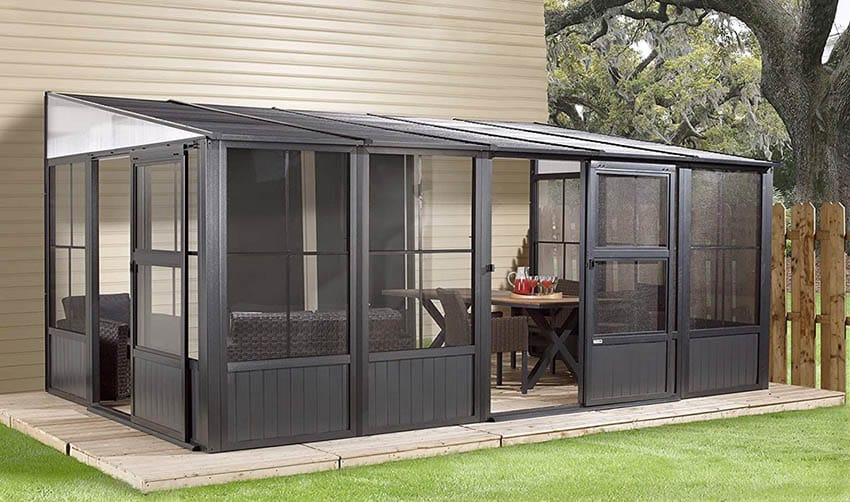
Cottages and beach homes are known for large deck screen enclosures allowing the ocean air to flow through the screens without allowing bugs inside. Outdoor space screen enclosures allow homeowners to enjoy the outdoors even when it’s raining.
Many porch screen enclosures come with black aluminum screen mesh that is almost invisible and more durable than standard fiberglass screen. Installation commonly includes adding an engineered screen frame around the patio’s perimeter and rolling the screen around the frame.
The screen is then secured to the frame. Screened-in patios can later be converted to a glass enclosure creating a three or four-season porch.
Glass Enclosures for the Patio
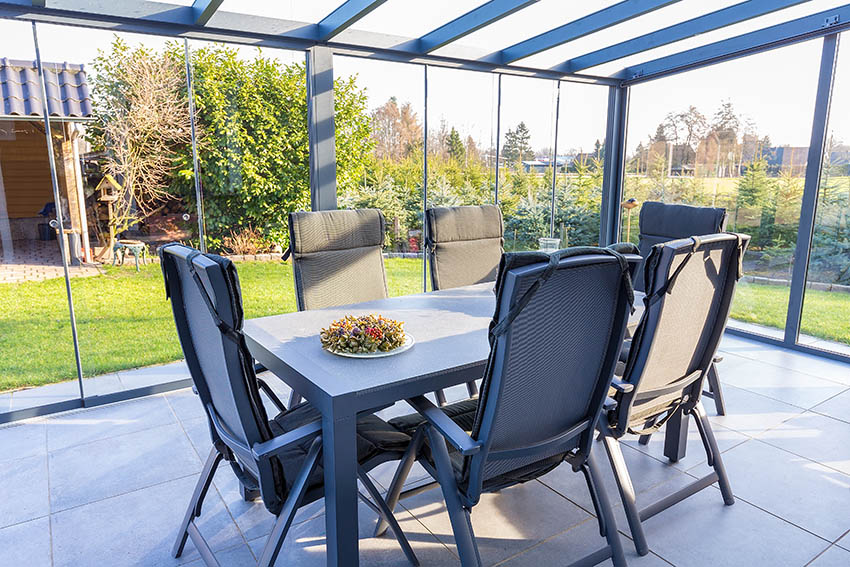
A glass porch enclosure is typically known as a sunroom and provides plenty of natural light. Most glass porch enclosures are designed for year-round use and include choices of roof style, frame finishes, type of door, and other customized features.
If your home already has a deck area or a deck under the home’s roofline, the walls can be framed and fit with glass panels. These glass outdoor space enclosures allow the porch to be climate-controlled with heating and cooling.
Glass porch enclosures that are not part of the home’s roofline can include a glass roof creating a solarium. The glass surround allows for growing native and tropical plants in the solarium and star gazing at night.
If your glass outdoor space enclosure needs airflow, replace one or a few glass panels with full-length rolling glass and screen panels.
Vinyl Panel Enclosures
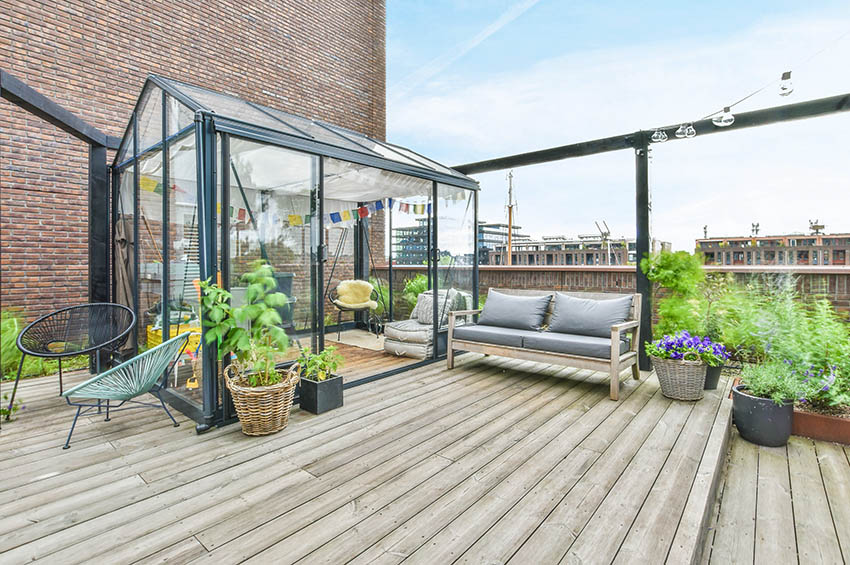
Enclosing a porch or patio with vinyl makes a warm, dry, and protected space to winterize outdoor furniture, pillows, cushions, and barbecue grills during the winter. It’s also a great way to create an additional living area for your home.
Vinyl outdoor space enclosures can be a do-it-yourself project or custom-designed and installed by an enclosure company.
The vinyl may come mounted on frames or be directly attached to the frame of the deck. Vinyl panels running on a track similar to curtains work well for protection against a gusty rainstorm. Still, they do not provide a seal against rain or snow.
Clear Vinyl Enclosures
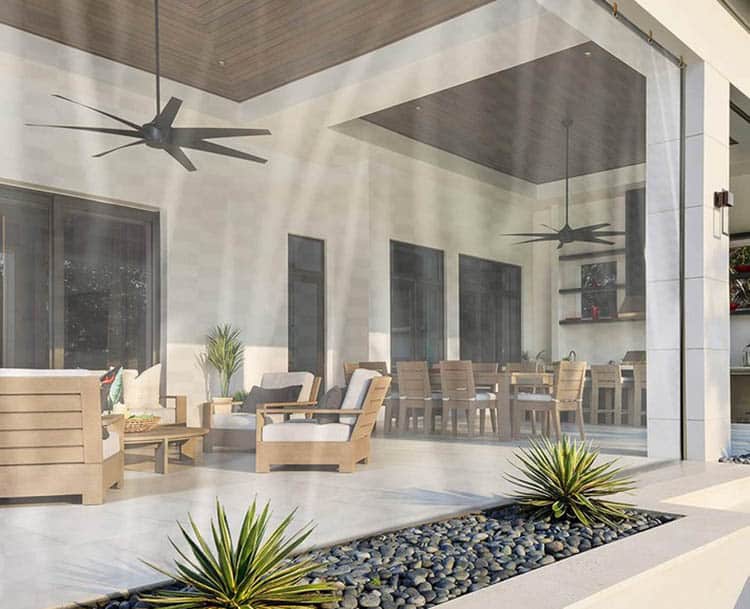
A less expensive option for enclosing an outdoor space is using clear vinyl. It’s an easy way to keep the weather out and still enjoy the surrounding view.
Clear vinyl comes in several thicknesses and is installed in several ways. If a deck has screens, 20 gauge vinyl is thin enough to fit in the existing channel with the spline. If creating separate vinyl coverings to place over the screen, 30 and 40 gauge vinyl provides better insulation and is longer-lasting.
Wood frames built with 1″ x 2″ molding easily pop in and out for use during the colder months or during bad weather. The clear vinyl is stretched over the frame and stapled, and these frames are placed over the existing screens.
The most used method of installing vinyl to enclose a porch is to use grommets. Clear vinyl sheets with grommets are rolled up when not needed or removed entirely and stored.
Aluminum Enclosures
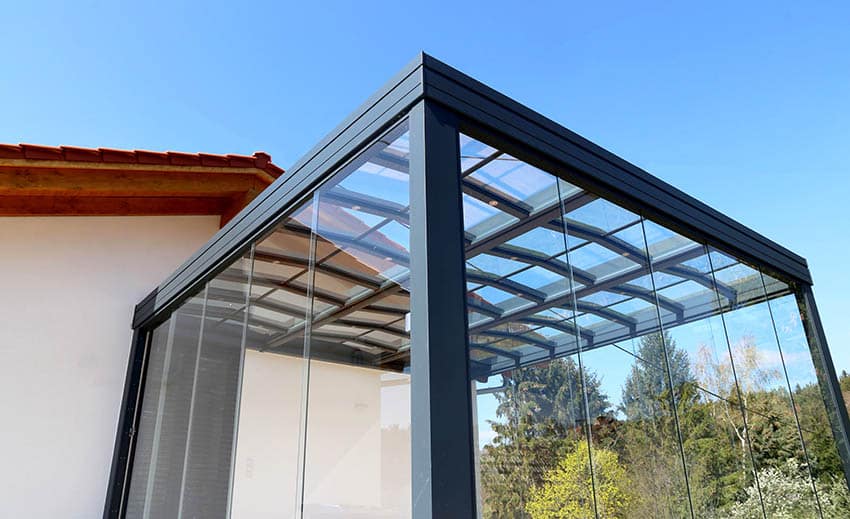
When enclosing an outdoor lounge area, conventional construction methods can be costly and time-consuming. Sometimes these methods may even require construction modifications to your home.
Aluminum deck enclosures are less expensive and come either with framed walls or include an aluminum roof. An aluminum deck roof is made of panels locked together, making the roof strong and weather resistant.
Aluminum wall systems are typically made from 3-inch aluminum, and windows and doors are recessed in the wall. The windows and doors come with screen, glass, or rolling glass and screen for protection from the weather. Aluminum deck enclosures do not require painting and clean up easily.
Acrylic (Plastic) Enclosures
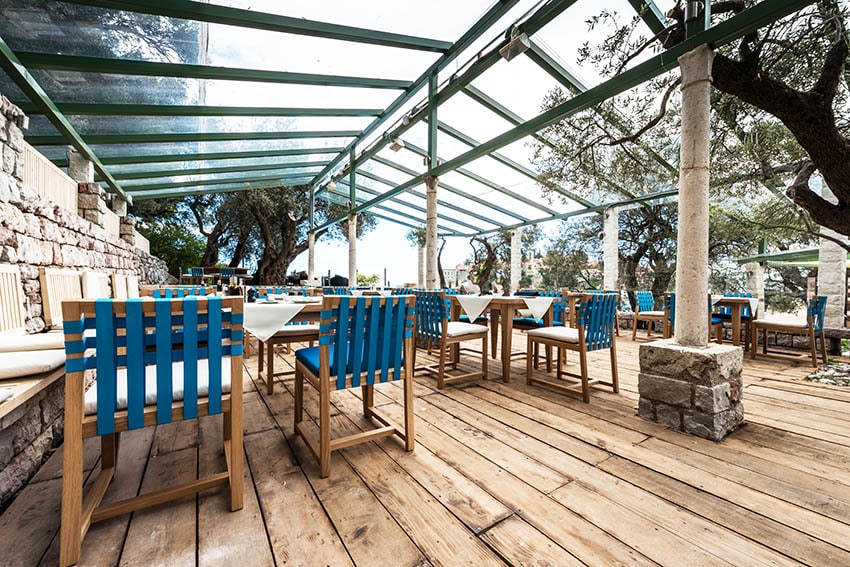
Acrylic panels are made from rigid clear plastic and are much lighter than glass. These easy-to-store outdoor lounge enclosure panels are resistant to breaking, and if they do, they do not shatter like glass, making them safer.
The drawbacks of acrylic patio enclosures include yellowing from UV exposure, scratching easily, and bowing due to temperature and humidity changes. Acrylic enclosures need special cleaners to prevent streaking.
Deck Enclosure Kits
For do-it-yourself homeowners, a deck enclosure kit can be an affordable and practical way to enclose different types of patios. Deck enclosure kits typically come designed to use the existing patio foundation and roof.
These kits are permanent installations and come with supplies for walls only. For homes without a roof extended over the deck, a hardtop roof kit or a soft-top kit provides a covering. Some manufacturers offer temporary deck enclosure kits, which are pre-assembled and free-standing.
These kits require a solid and level surface such as a concrete slab, constructed floor base, or hard ground. A solid wall must already exist on the home to attach the structure, and many kits include built-in gutter systems for water drainage. Aluminum lounge enclosure kits sometimes include an aluminum base.
Retractable Enclosures for Patios
A deck enclosure allows the homeowner to use their deck during mild weather. A glass structure keeps the cold and inclement weather out rather than using a breezy screen.
With a retractable outdoor space enclosure, homeowners have the best of both worlds. The retractable mechanics enable the covering to close for bad weather or during the winter. When the weather is nice and warm, the cover opens back up.
Options for retractable screen enclosures include separate retractable screens and glass panels raised up and down with a powered control.
Retracting glass enclosures also include frameless glass panels that slide on a track to open and close. These are easier to install and don’t require a power source. Most retractable options have two rails; one rail mounted on the house and one rail mounted in the ground.
Retractable deck enclosures are the most expensive options and depending on the mechanisms, size, design, and how they retract, these products need to be installed by a professional contractor.
Temporary Enclosures for Patios
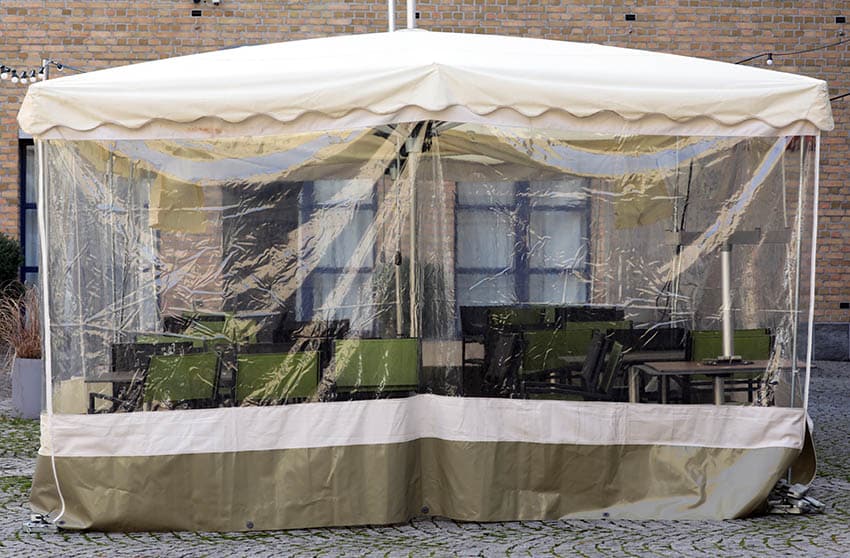
When a homeowner wants to have a heated outdoor space for the colder months, temporary deck enclosures allow weather-proof protection but can be converted back into an open space after the cold weather passes.
At times, homeowners desire an enclosed outdoor space to keep out bugs while allowing airflow for warmer climates. Below are samples of temporary outdoor space enclosures.
- Insulated Curtains – Easy to hang, choice of colors and patterns, and inexpensive
- Dropdown Panels – Cloth or vinyl panels attached to the terace, do not have to be taken down, roll up for storage.
- Mosquito Curtains – Easy to hang instead of screening in a deck, keeps out mosquitoes and pests, removable for winter
- Removable Screen Panels – As discussed in screen deck enclosures, screen panels can be removed when not needed and stored
- Vinyl Patio Panels – Whether installed with grommets or as hanging panels, vinyl is removed and stored when not needed
Winter Outdoor Enclosure
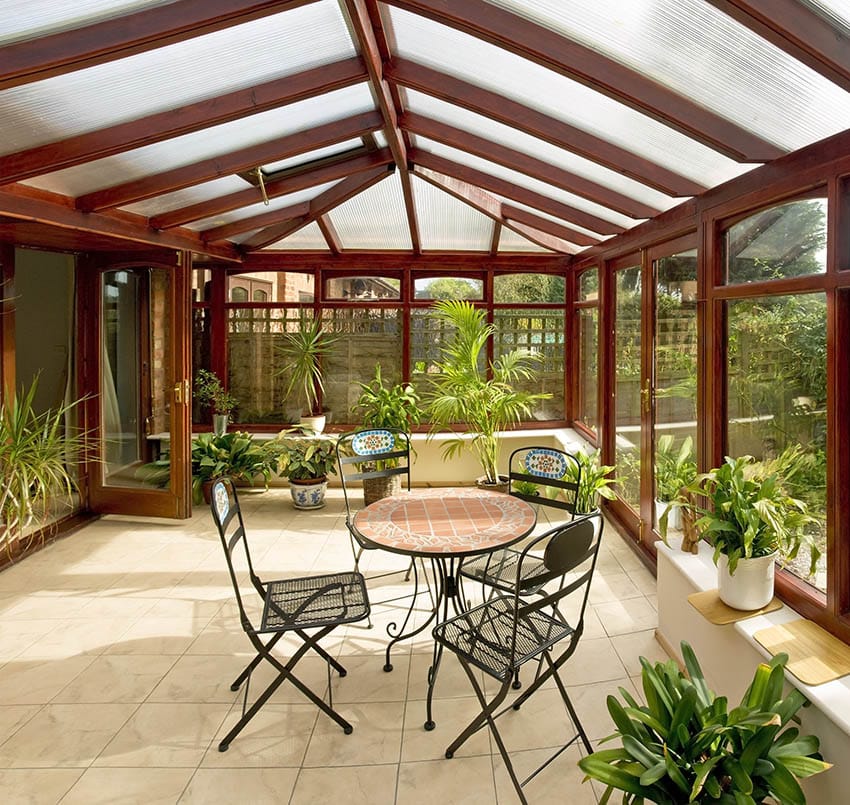
Clear vinyl works well for an outdoor lounge that already has a roof and framed structure. It comes in rolls and can be cut to cover the openings of the deck frame.
Clear vinyl enclosures block almost all the cold air and still provide a great view. It allows the sun to warm up the deck during the day, and when an outdoor heater is added to the deck, the area stays warm enough to use during cold winter months.
Acrylic panels also help to protect an outdoor lounge from winter temperatures and harsh weather. They both fit over screened deck frames and are made to custom sizes. Acrylic panels can be removed and stored during the warmer months or left up to create a solarium for plants.
Four Seasons Enclosures for Porches and Patios
A four-season deck enclosure offers a space to enjoy and entertain all year long and is designed to accommodate heating and cooling.
Four-season patios create a transition from indoor living to outdoors, allowing homeowners to go from an inside room to a sunroom with plenty of natural light and a view of the scenery. As a permanent addition to a home, four-season deck enclosures are built to match the home’s exterior.
The glass used for the walls, and sometimes the roof, of a year-round deck enclosure is double-pane insulated glass much like that of a window. Frames are commonly made from aluminum or vinyl and can include screens for air circulation.
If an exit is wanted, doors are built into the deck enclosure. Four-season deck enclosures typically include electricity, heating, cooling, and sometimes plumbing for a sink or wet bar.
Enclosure Costs
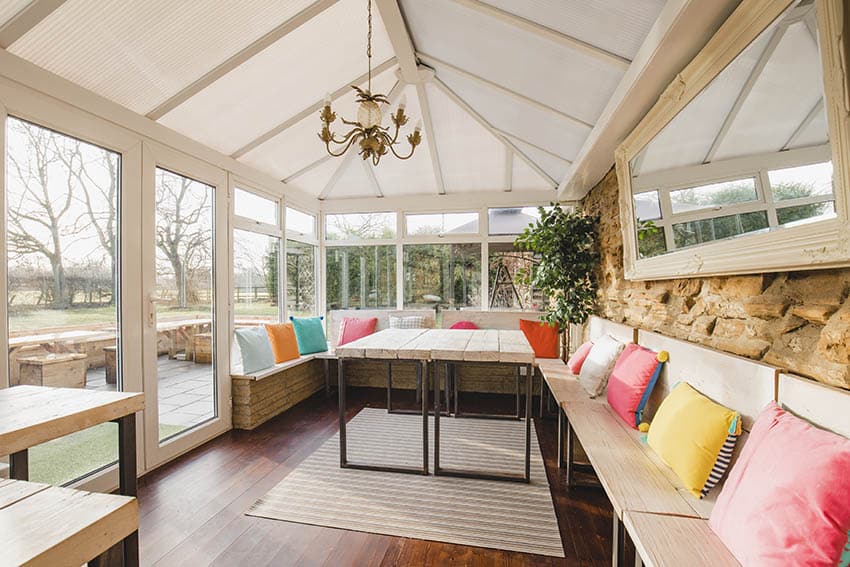
Building a covered deck enclosure can cost an average of $8,425 to $25,049, depending on type, materials, and design. The national average for an enclosed deck is $16,570. If building a four-season enclosure, the average cost runs from $15,000 to $22,000
The amounts below cover some of the outdoor lounge enclosure options, but there are many other factors to consider when estimating the cost. These numbers are based on a 10′ x 12′ deck.
| Patio Enclosure Type | Materials | Roof Included? | Labor | Average Cost |
| Complete build with slab, framing, roofing | Wood, glass, screen, aluminum | Yes | Included | $20,000 |
| Glass Deck Enclosure | Wood, glass, aluminum | Yes | Included | $15,000 – $22,000. |
| Screen Patio Enclosure | Wood, screen | No | None | $500 |
| Screen Patio Enclosure | Wood, screen | No | Included | $1,200 – $1,400 |
| Vinyl Outdoor Lounge Enclosure | Wood, vinyl | No | None | $350 – $500 |
| Deck Enclosure Kits | Aluminum frame, acrylic wall panels, sliding doors, built-in gutters, roof panels | Yes | Not included | $4,800 – $6,000 |
| Patio Enclosure Kits | Pre-built | No | None | $1,000 |
Below are some of the additional costs when determining the price to enclose an outdoor lounge:
- Deck size and location
- Building permits
- Electrical requirements
- Heating and cooling options
- Doors
- Motorized screens
- Quality of materials used such as screen, vinyl, acrylic, glass
An outdoor patio enclosure can help expand your home’s living areas and help you get more enjoyment from your space. Having no deck covering means rain will ruin a barbecue. Too much hot sun and mosquitoes send a party inside the house. And a relaxing visit in the fall means everyone is wrapped in blankets to enjoy the outdoors.
Are there any types of deck enclosures that we missed in this article? Let us know in the comment which kind works best for you. For more related content visit our gallery of enclosed patio ideas here.

